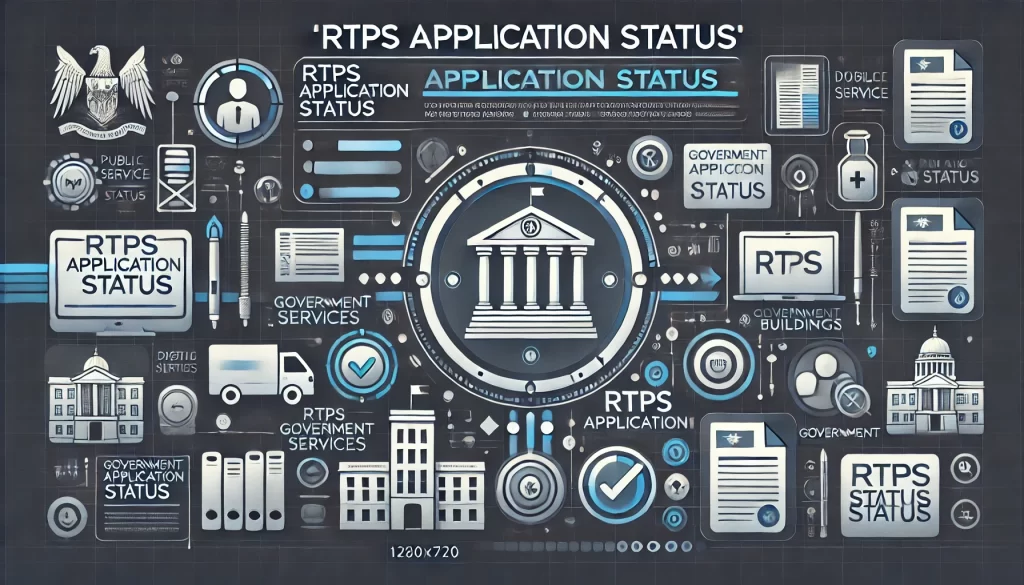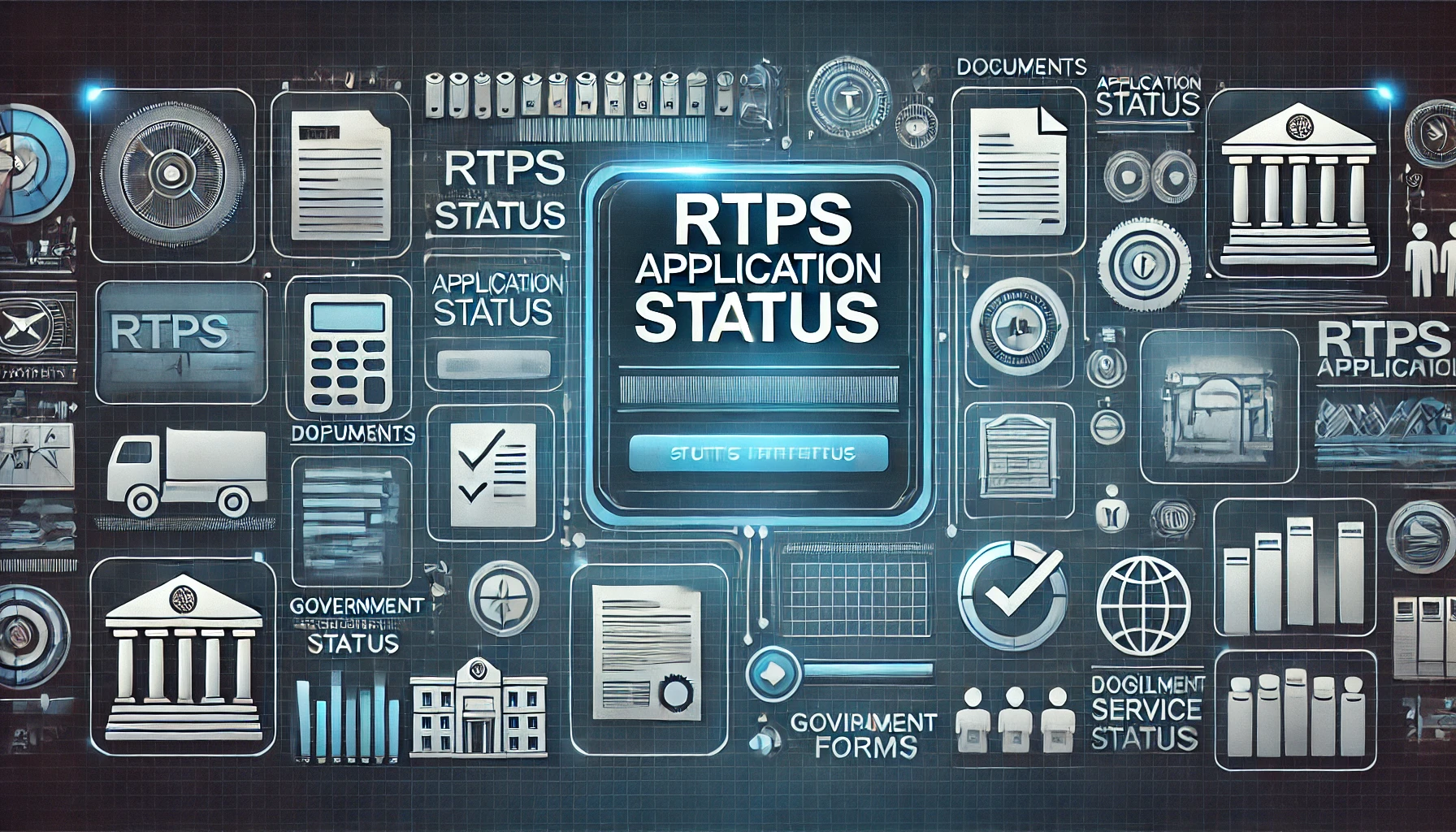Right to Public Service (RTPS) guarantees the timely delivery of different public services. If you have applied for any services through RTPS, then it is essential to keep track of the status of your application. The RTPS Application Status is a speedy way to track your application, so you know where it lies and in what stage for any necessary action. The portal itself can indicate if anything further needs to be done. Our platform makes it easier for you to track the status of your awaited certificates, permissions, or other documents provided by government agencies, hence making citizen-centric services more accessible and transparent!
About Rtps

| Aspect | Details |
|---|---|
| Purpose | To ensure timely delivery of various public services to citizens. |
| Legal Framework | RTPS legislation provides a legal right for citizens to receive public services within a stipulated timeframe. |
| Services Covered | Birth certificates, death certificates, domicile, income, caste certificates, licensing, registrations, etc. |
| Key Benefits | Reduces bureaucracy, increases transparency, and fosters accountability in government services. |
| Penalties | Government officials may face penalties for failing to deliver services within the designated time. |
| Digital Empowerment | Allows citizens to track the status of their applications online, promoting efficiency and accessibility. |
| Objective | To make government interactions simpler, predictable, reliable, and accountable to the public. |
The Right to Public Service (RTPS) legislation is an initiative of the Government of India that attempts to ensure timely delivery of public services in Indian states. The act asks the government to provide basic services like health, education, etc. within a time frame and makes it the legal right of Indian citizens that they will be getting those services that are mentioned in the given period. Officer Adalat will levie penalty rates on the concerned officer if the government service is not done in time.
In terms of services, RTPS encompasses numerous certificates like birth, death, domicile, income proof, etc., along with other government benefits sections such as pension schemes, licensing and registration, etc. The RTPS Act primarily aims at providing ordinary people with relief from red tape, secrecy in government functioning, and a sense of responsibility among officials. RTPS also empowers citizens with a digital tool that allows them to monitor their application status online and helps promote efficient governance.
Also Check – Elabharthi Payment Status
Purpose of RTPS
Right to Public Service (RTPS) legislation is a key development towards the realization of the primary objective for which services were introduced. By law, the government is responsible for providing specified services for citizens within a set timeframe, enforcing accountability and efficiency in governance. Take a look at the RTPS’s major goals and benefits.
- Adequate Services Within Stipulated Time: Citizens should have the right to receive their needed public services (e.g., licenses, certificates, and registrations) within a predetermined time.
- Transparency: through the formulation of service delivery timelines, RTPS increases transparency in government processes, thus providing clarity to people about when and how services will be provided.
- Accountability: The legislation holds public officials accountable for delays and non-delivery, which in turn can lead to fines or even disciplinary action if services are not made as promised.
- Decrease in Corruption: Because of a fixed timeline with fewer windows for discretionary delays, RTPS has been reported to reduce corruption and bribe needs, which were previously necessary for expedited services.
- Higher Citizen Satisfaction: Better response and certainty in services create citizen satisfaction from the way government functions.
- Right-Based Entitlement to Citizens: RTPS gives legal rights to citizens for demanding services to which they are entitled and makes the government accountable to its people.
- Digital Infrastructure: Several RTPS implementations have an online platform that allows citizens to apply and also track and get service digitally, making these services more easy, efficient, and accessible.
Overall, the purpose of RTPS is to foster a more citizen-centric approach in government service delivery, ensuring that public services are provided fairly, efficiently, and without unnecessary delays.
Key Features of RTPS
The salient features of the Right to Public Service (RTPS) Act that distinguish it as a hope for better public service delivery The primary features of RTPS are:
- Legal Service Level Agreement (SLA): RTPS has SLAs for certain services and ensures that citizens receive the service only in defined laps of time. This legal backing means that the delivery of services is not merely a policy but an obligation.
- Time-bound Service: The timelines themselves differ depending on the nature of the service, but they are made explicit so that citizens know when they can expect to get what they apply for.
- Broad Spectrum of Services Covered: RTPS covers many services that are being provided by different government departments. Common services include the issuance of certificates, such as birth and death certificates.
- Consequences of Non-Compliance: The Act specifies sanctions for any public official who does not complete a function within the timelines. That may mean fines and sanctions.
- Transparent Application Process: To be more transparent, RTPS uses different digital platforms for the application process to be more transparent. This will enable citizens to apply for their service online, follow up on the status of their application, and receive notifications about any pending actions or completed services.
- Redress: The citizens can appeal for a service if it is denied or not delivered as per the time fixed. This guarantees one more layer of accountability and provides a venue for complaints.
- Prompt Public Approval and Access: RTPS also serves as a way to inform the public about their rights under legislation. Whether it is through different links in a chain, the information at some point should reach all strata of society so that every person knows how to avail of whatever service he or she has been made entitled to.
- Annual Reporting and Auditing: Programs must report annually on the services provided under RTPS. This included compliance data, such as the reasons for delays and any disciplinary action imposed.
These features collectively contribute to a more efficient, accountable, and citizen-friendly public administration under the RTPS framework.
Challenges in RTPS Implementation
- Bureaucratic Inertia: Changing long-standing practices and overcoming bureaucratic inertia can be difficult. Resistance from government staff, who are used to traditional ways of functioning, can slow down the implementation process and hinder the efficiency of RTPS.
- Lack of Awareness Among Citizens: Despite efforts to promote RTPS, a significant portion of the population may remain unaware of their rights under the legislation. This lack of awareness can prevent individuals from demanding timely services and holding officials accountable.
- Digital Divide: RTPS often relies on digital platforms for application processing and tracking. However, not all citizens have equal access to digital resources, which can create disparities in the accessibility of services, especially in rural or underprivileged areas.
- Infrastructure and Resource Constraints: Adequate infrastructure, including technological and human resources, is essential for the successful implementation of RTPS. In many cases, government departments may lack the necessary resources, leading to inefficiencies and delays.
- Training and Capacity Building: Effective implementation of RTPS requires well-trained personnel who understand the nuances of the legislation. Insufficient training and capacity building can lead to misinterpretations and errors in service delivery.
- Monitoring and Enforcement Challenges: Ensuring compliance with the stipulated timelines and handling appeals efficiently requires robust monitoring and enforcement mechanisms. Weaknesses in these areas can undermine the effectiveness of the RTPS.
- Corruption and Red Tape: While RTPS aims to reduce fraud and bureaucracy, these issues can still persist and impact the prompt delivery of services. Corruption may manifest in the form of officials demanding bribes to expedite services.
- Complexity of Services: The wide range of services covered by RTPS varies greatly in terms of processing complexity. Some services may require more time to deliver than others, complicating the standardization of timelines.
- Legal and Regulatory Hurdles: Amendments to existing laws and regulations are often necessary to align them with RTPS provisions. This legal restructuring can be time-consuming and complex.
- Feedback and Continuous Improvement: Gathering feedback from users and continuously improving service delivery based on this feedback is critical but can be challenging to implement effectively.
Addressing these challenges requires concerted efforts from all levels of government, continuous evaluation, and the willingness to adapt and improve systems to ensure that RTPS fulfills its promise of enhancing public service delivery.
Eligibility Criteria
| Service | Eligibility Criteria | Required Documents |
|---|---|---|
| Birth Certificate | Applicant should be the legal guardian or parent. | Hospital/ Home Birth Proof, Parent’s ID. |
| Income Certificate | Applicant must be a resident of the issuing state. | Proof of Income, Resident Proof. |
| Caste Certificate | Applicant must belong to the mentioned caste. | Caste Proof, Identity Proof. |
| Death Certificate | Application must be related to the deceased. | Proof of Death, Relationship Proof. |
| Land Records | Land should be legally owned by the applicant. | Land Ownership Documents, Identity Proof. |
| Driver’s License | Applicant must meet the age and health requirements. | Medical Certificate, Learner’s License. |
| Marriage Certificate | Both individuals should meet the legal age for marriage. | Age Proof, Identity Proof, Marriage Proof. |
Required Document
| Service | Required Documents |
|---|---|
| Birth Certificate | Hospital birth record, parent’s identity proof, residential proof |
| Income Certificate | Proof of income (salary slips, tax returns), identity proof, residential proof |
| Caste Certificate | Caste declaration, identity proof, residential proof |
| Death Certificate | Death record from hospital/medical institution, identity proof of the applicant, relationship proof |
| Land Records | Property deed, previous land records, identity proof |
| Driver’s License | Learner’s license, medical fitness certificate, proof of residence, identity proof |
| Marriage Certificate | Marriage registration form, identity proofs of both partners, age proof, residence proof, wedding photos |
Check Rtps Application Status 2024 Check Online At serviceonline.gov.in
To check your RTPS application status online for the year 2024 at serviceonline.gov.in, follow these steps:
- Open your web browser and go to serviceonline.gov.in.
- On the homepage, select the state from which you have applied for the RTPS service. Each state has its own portal for RTPS services.
- Once on your state’s specific service portal, navigate to the RTPS (Right to Public Service) section. This may be listed under ‘Services‘ or directly accessible from the homepage.
- Look for an option that says ‘Check Application Status’ or similar. Click on this to proceed.
- You will be prompted to enter details such as your application ID, registration number, or other required information as specified on the site.
- After entering the necessary details, click on the ‘Submit’ or ‘Check Status’ button.
- Your application status should be displayed on the screen. This will include information such as the current stage of your application, any actions required from your side, or the expected completion date.
- If needed, you may have the option to print or download the status information for your records.
Also Check – Ammavodi Payment Status
Conclusion
This service brings transparency and efficiency to the government’s line of work. RTPS supports citizens by keeping them updated about the status of their application through an online process, which will keep you engaged in the loop. This game will make service providers accountable, and interaction between the government segments of state functioning will hardly experience breakdowns.
Rtps Application Status Contact Details
| Contact Type | Details | Availability |
|---|---|---|
| Phone Number | – | 9 AM to 5 PM, Mon-Fri |
| Email Address | [email protected] | 24/7 |
| Live Chat | Accessible through the official portal | 9 AM to 8 PM, Daily |
| FAQ Section | Visit the FAQ section on the website | 24/7 online access |
| Physical Address | 123 Government Ave, Capitol City | Office hours 9 AM to 5 PM |
| Social Media | Follow on Twitter @RTPS | Updates available 24/7 |

Vikas Gupta is an insightful content creator and financial analyst, educated in economics and public administration. At yojanastatuschecktoday.in, he specializes in simplifying complex government schemes, aiming to empower readers with vital information. His expertise helps citizens navigate and utilize government initiatives effectively, ensuring access to essential updates and developments.
